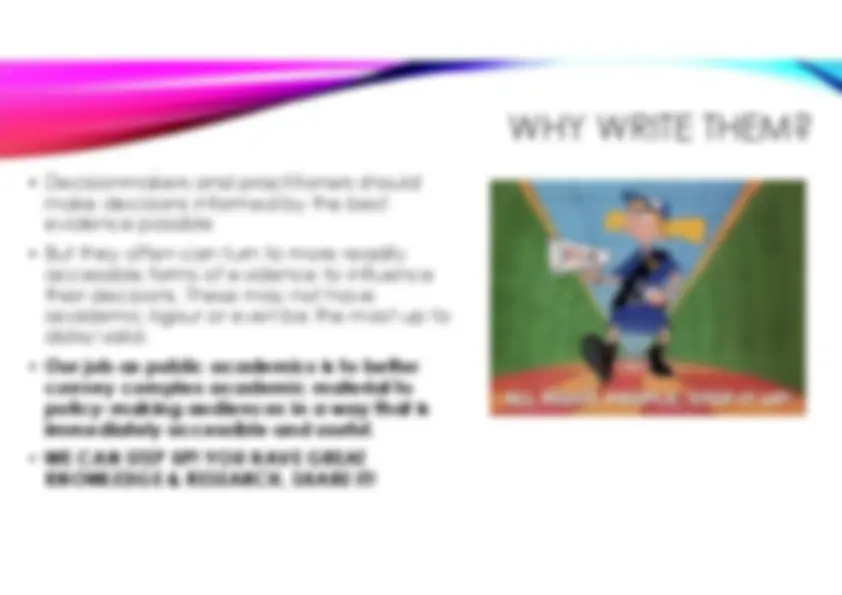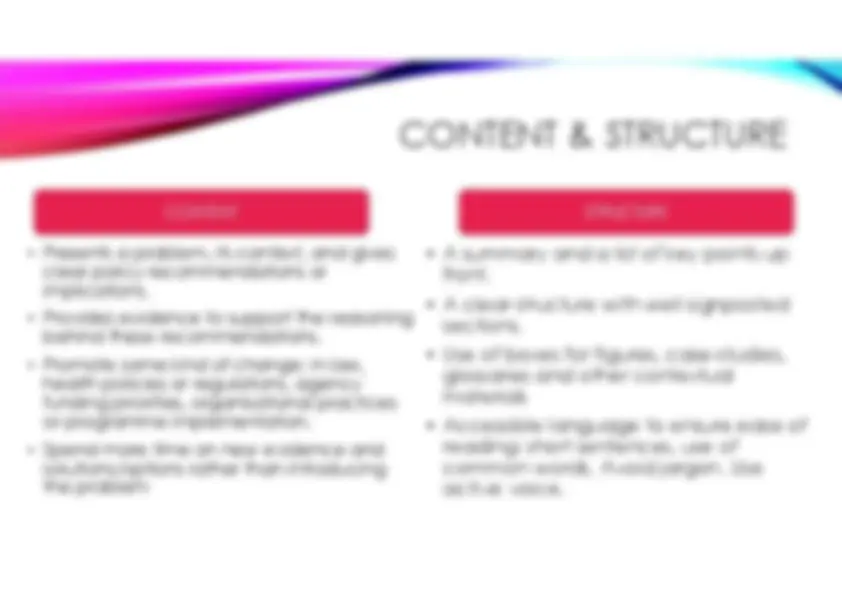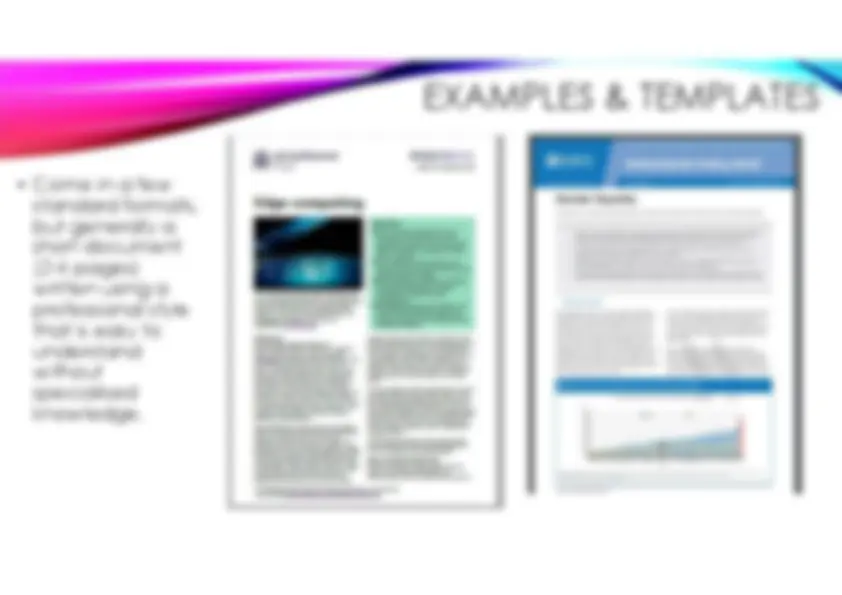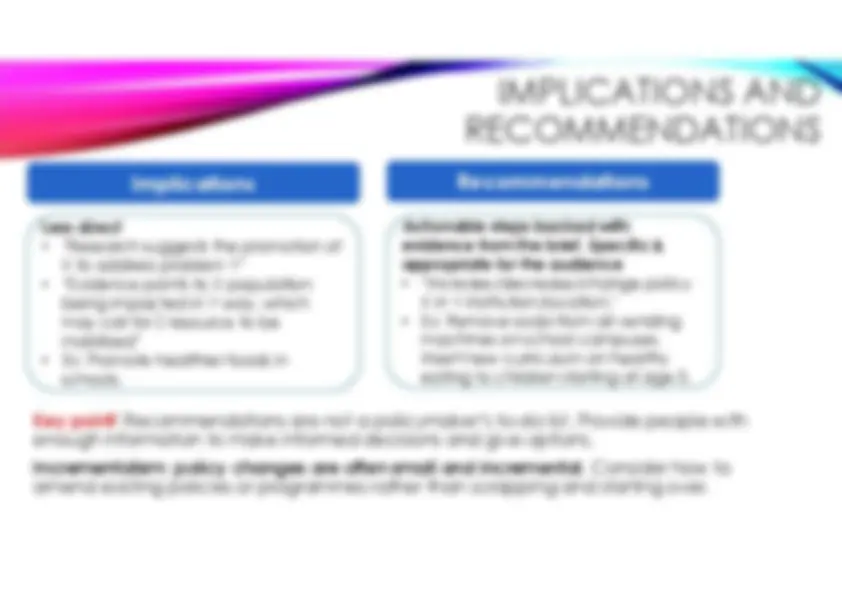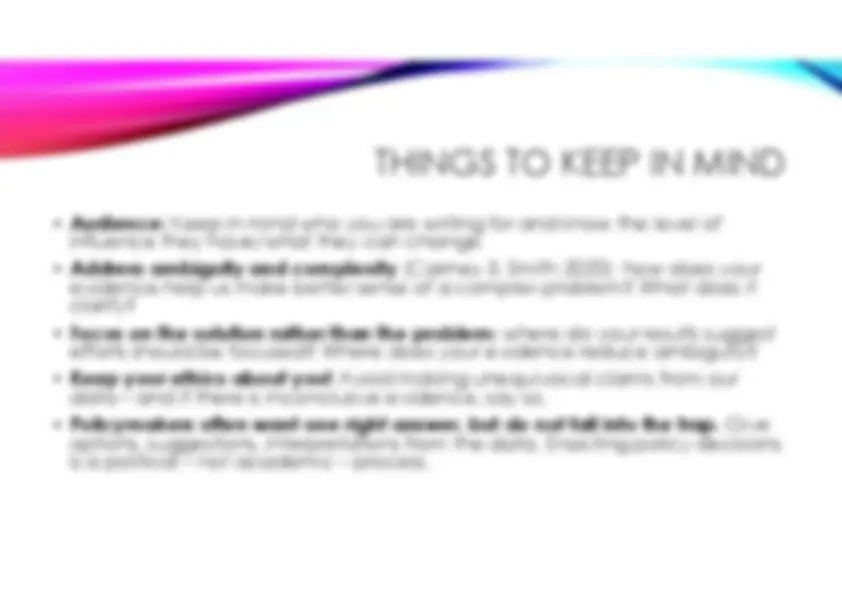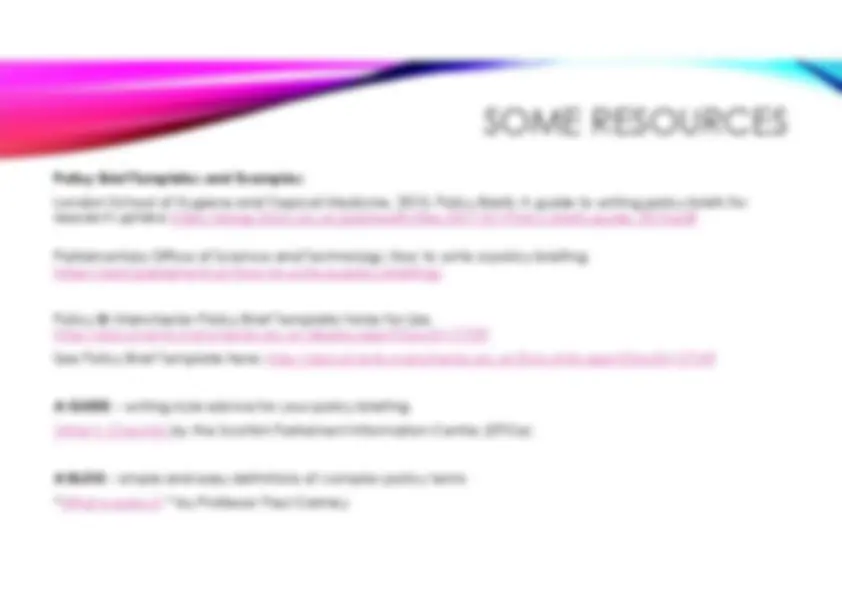Download HOW TO WRITE A POLICY BRIEF and more Schemes and Mind Maps Medicine in PDF only on Docsity!
HOW TO WRITE A
POLICY BRIEF
Dr Sarah Weakley Research Officer, Policy Scotland Dr Mariola Tarrega Digital Resources Coordinator SPRE
WHAT IS A POLICY BRIEF?
- Policy brief is a concise, stand alone publication with a specific purpose to inform/advise a non-academic external audience of an issue that requires policy attention - Written for a specific audience in mind (not just ‘policymakers’)
- They are one way key facts and points of reference about a given issue are conveyed to decision-makers for a specific purpose - Other types of outputs include blogs, working papers, seminars, submitted evidence to inquiries
- Can review the state of play in the field for a specific purpose (e.g. POSTNotes on marine renewables) or can focus more on translating new pieces of evidence from you or your research unit into the evidence base(what we’ll do today)
CONTENT & STRUCTURE
- Presents a problem, its context, and gives clear policy recommendations or implications.
- Provides evidence to support the reasoning behind these recommendations.
- Promote some kind of change: in law, health policies or regulations, agency funding priorities, organisational practices or programme implementation.
- Spend more time on new evidence and solutions/options rather than introducing the problem CONTENT STRUCTURE - A summary and a list of key points up front. - A clear structure with well signposted sections. - Use of boxes for figures, case-studies, glossaries and other contextual materials - Accessible language to ensure ease of reading: short sentences, use of common words. Avoid jargon. Use active voice.
EXAMPLES & TEMPLATES
- Come in a few standard formats, but generally a short document (2-4 pages) written using a professional style that is easy to understand without specialised knowledge.
Introduction (150-200)
- Aim to capture attention
- Explain purpose of brief
- Context & background info Executive Summary (150-200 words)
- Context, key points/results (bits of new data)
- Recommendations and implications: often in bulleted list! Methodology (50 -100)
- Conveys authority & validity
- Describe methods but avoid overly technical language Research, Results & Conclusions (400 – 500) - Provides summary of issues - Move from general to specific for key results - Tailor findings to audience & interests - Base conclusions on results – these should be concrete Policy Implications/Recommendations (400 -
- State clearly what should happen next – following on from conclusions
- Recs describe steps that are credible, relevant and feasible.
- Recs are self-contained
- Implications less direct – describe consequences of research References and useful resources: if synthesising evidence from many sources, cite list. Acknowledge funder. Direct readers to more by same author if useful.
TEMPLATE SECTIONS
IMPLICATIONS AND
RECOMMENDATIONS
Key point! Recommendations are not a policymaker’s to-do list. Provide people with enough information to make informed decisions and give options. Incrementalism: policy changes are often small and incremental. Consider how to amend existing policies or programmes rather than scrapping and starting over. Less direct
- ‘Research suggests the promotion of X to address problem Y’
- ‘Evidence points to X population being impacted in Y way, which may call for Z resource to be mobilised’
- Ex: Promote healthier foods in schools. Actionable steps backed with evidence from the brief. Specific & appropriate for the audience - ‘Increase/decrease/change policy X in Y institution/location.’ - Ex: Remove soda from all vending machines on school campuses. Insert new curriculum on healthy eating to children starting at age 5.
Implications Recommendations
SOME RESOURCES
Policy Brief Templates and Examples: London School of Hygiene and Tropical Medicine, 2015. Policy Briefs: A guide to writing policy briefs for research uptake https://blogs.lshtm.ac.uk/griphealth/files/2017/01/Policy-briefs-guide_2015.pdf Parliamentary Office of Science and Technology How to write a policy briefing. https://post.parliament.uk/how-to-write-a-policy-briefing/ Policy @ Manchester Policy Brief Template Notes for Use http://documents.manchester.ac.uk/display.aspx?DocID= See Policy Brief Template here: http://documents.manchester.ac.uk/DocuInfo.aspx?DocID= A GUIDE – writing style advice for your policy briefing Writer’s Checklist by the Scottish Parliament Information Centre (SPICe) A BLOG - simple and easy definitions of complex policy terms “What is policy? “ by Professor Paul Cairney

